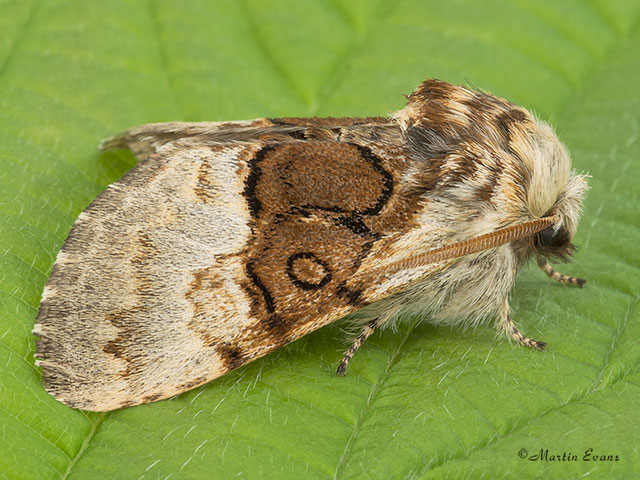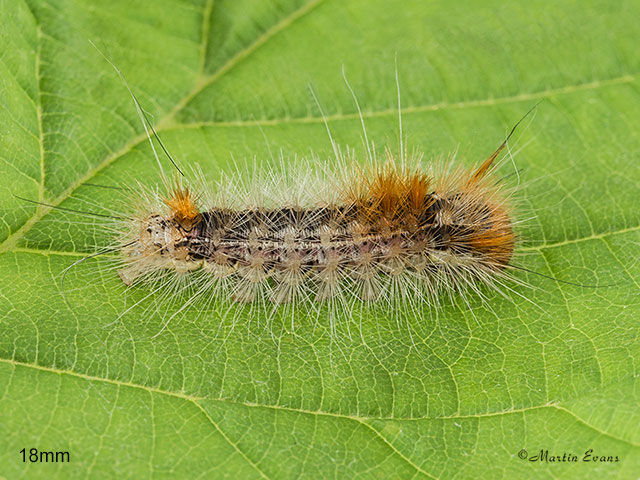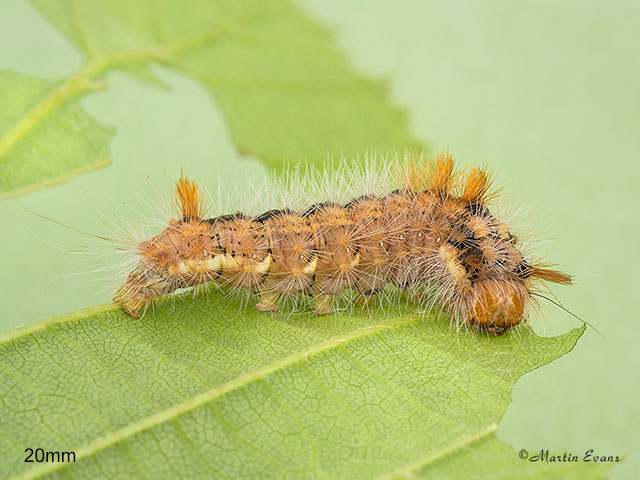Noctuidae
73.032 Nut-tree Tussock Colocasia coryli (Linnaeus, 1758)
Common
Similar species: This moth is unlikely to be mistaken for any other British or Irish species.
Forewing: 14 to 17mm
Habitats: Deciduous woodland.
Habits: The moth flies from dusk and comes to light.
Foodplant: The polyphagous larva feeds nocturnally on Hazel, Downy Birch, Silver Birch, Beech, Hornbeam, Field Maple and other deciduous trees. During the day the larva hides between two leaves spun together with silk. It pupates under moss, in the leaf litter or in loose soil under the tree.
On the European mainland it has also been recorded feeding on Grey Alder, limes, Hawthorn, Apple, Aspen and willows.












